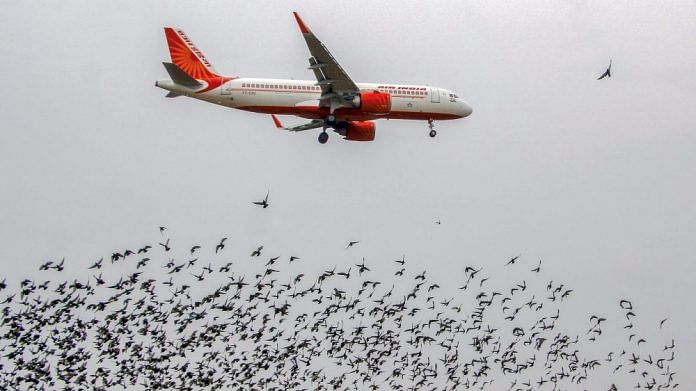New Delhi: Indian aviation regulator DGCA on Monday advised all airport operators to not ease their wildlife control measures even though air traffic has reduced due to the coronavirus pandemic.
Many regular activities such as grass cutting, bird activity monitoring patrols, and dispersal measures may be limited given the current situation of reduced manpower and lower aircraft movements at airfields, the Directorate General of Civil Aviation (DGCA) said in its circular.
“This may result in an increase of bird/wildlife that forage, feed and rest or even nest within or near aerodromes,” it stated.
In the past, there have been many incidents in India where aircraft have hit animals on the runway during take off or landing. There have also been incidents where a bird has hit the engine of an aircraft during its take off or landing or when it is at a lower altitude.
The regulator on Monday said as per its rules, an airport operator must take action to decrease the risk to aircraft operations by adopting measures to “minimise the likelihood of collisions between wildlife and aircraft”.
“Therefore, airport operators are advised not to ease bird/wildlife control measures and bird/wildlife monitoring be continued. Particular attention should be given to the increase of bird/wildlife activities as a result of reduced air traffic,” it said.
After a gap of two months, India resumed its domestic passenger flight operations from May 25. Scheduled international passenger flights continue to remain suspended in the country.
Cargo flights, medical evacuation flights and special repatriation flights have been operating in the country as usual amid the pandemic.
The rapid spread and deadly effect of COVID-19 has had a drastic effect on the airport operations, the regulator said in its circular.
“During the lockdown period, airports have seen a significant reduction in operations. With less air traffic and stay-at-home orders, it has also seen a reduction in personnel deployed on the airfields for various duties and functions, including wildlife management,” it said.
Many airports are near substantial wetlands, or drainage ponds, making these areas attractive to thousands of migratory birds including waterfowl, shorebirds, gulls and other large birds, the DGCA noted.
“Unfortunately, it is these birds that present a higher risk to aircraft. Therefore, given the current environment of reduced aviation activity, birds/wildlife are expected to expand their environment,” it said.
Also read: ‘All-pet’ private jet, costing Rs 1.6 lakh per seat, set to fly from Delhi to Mumbai






